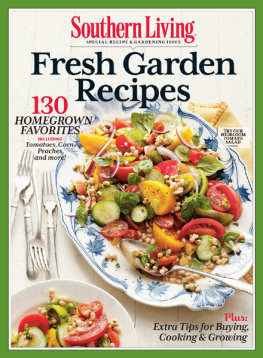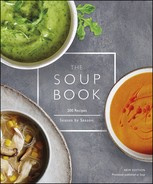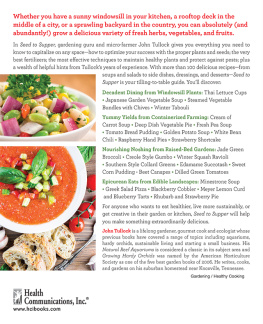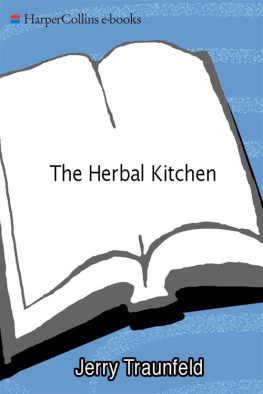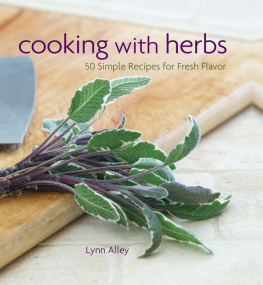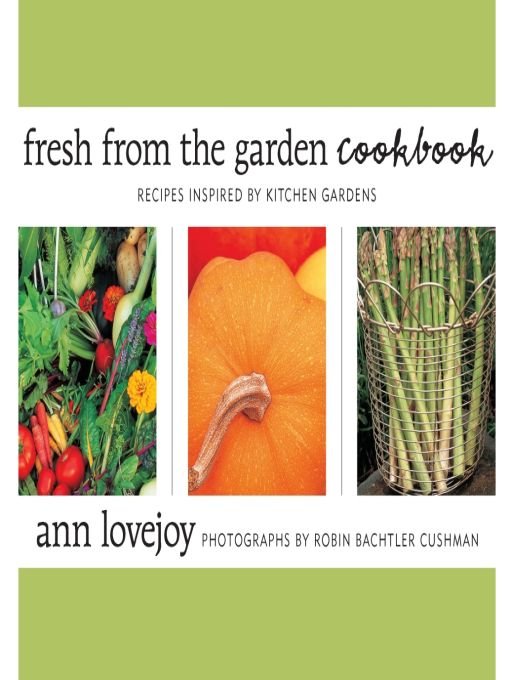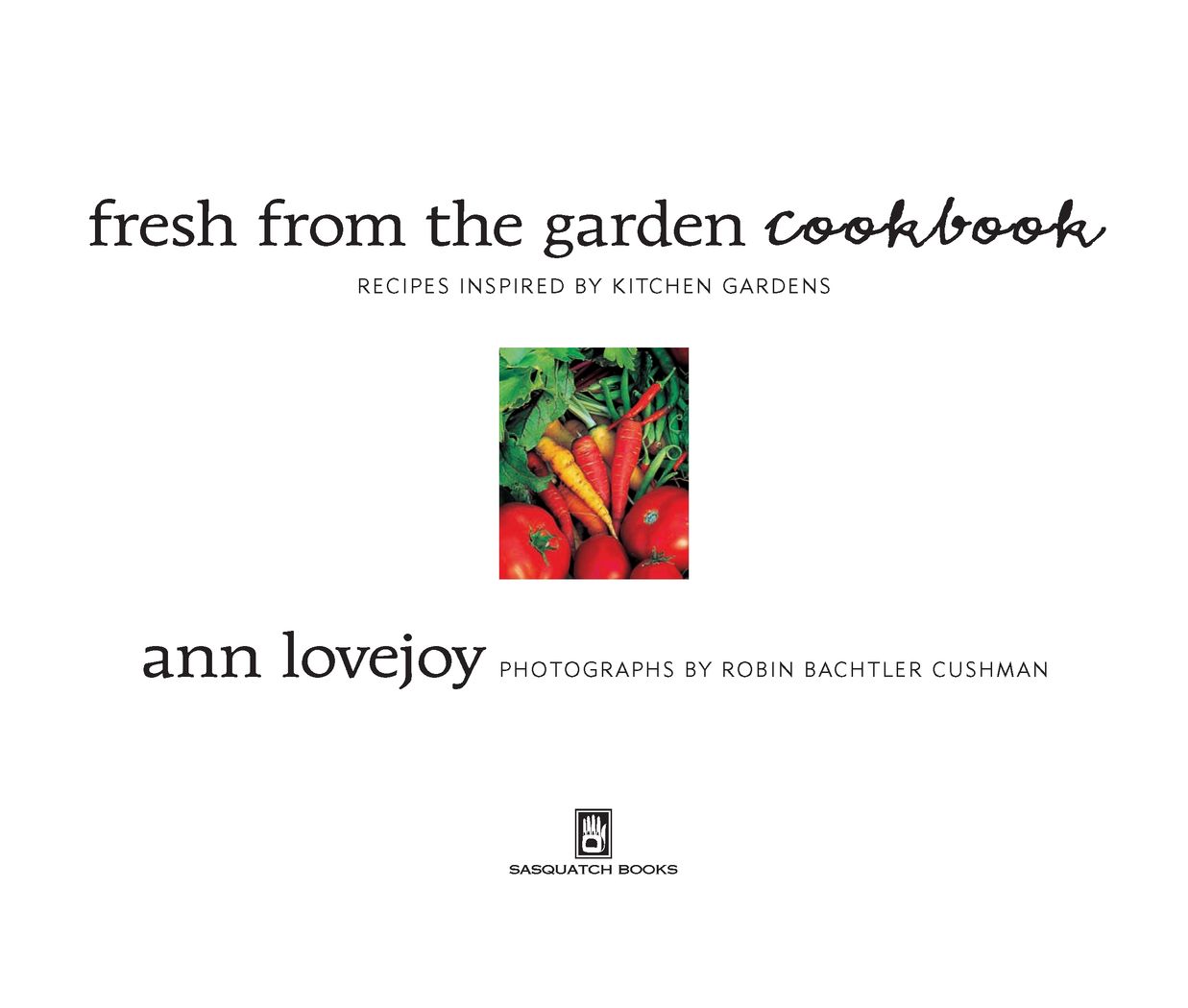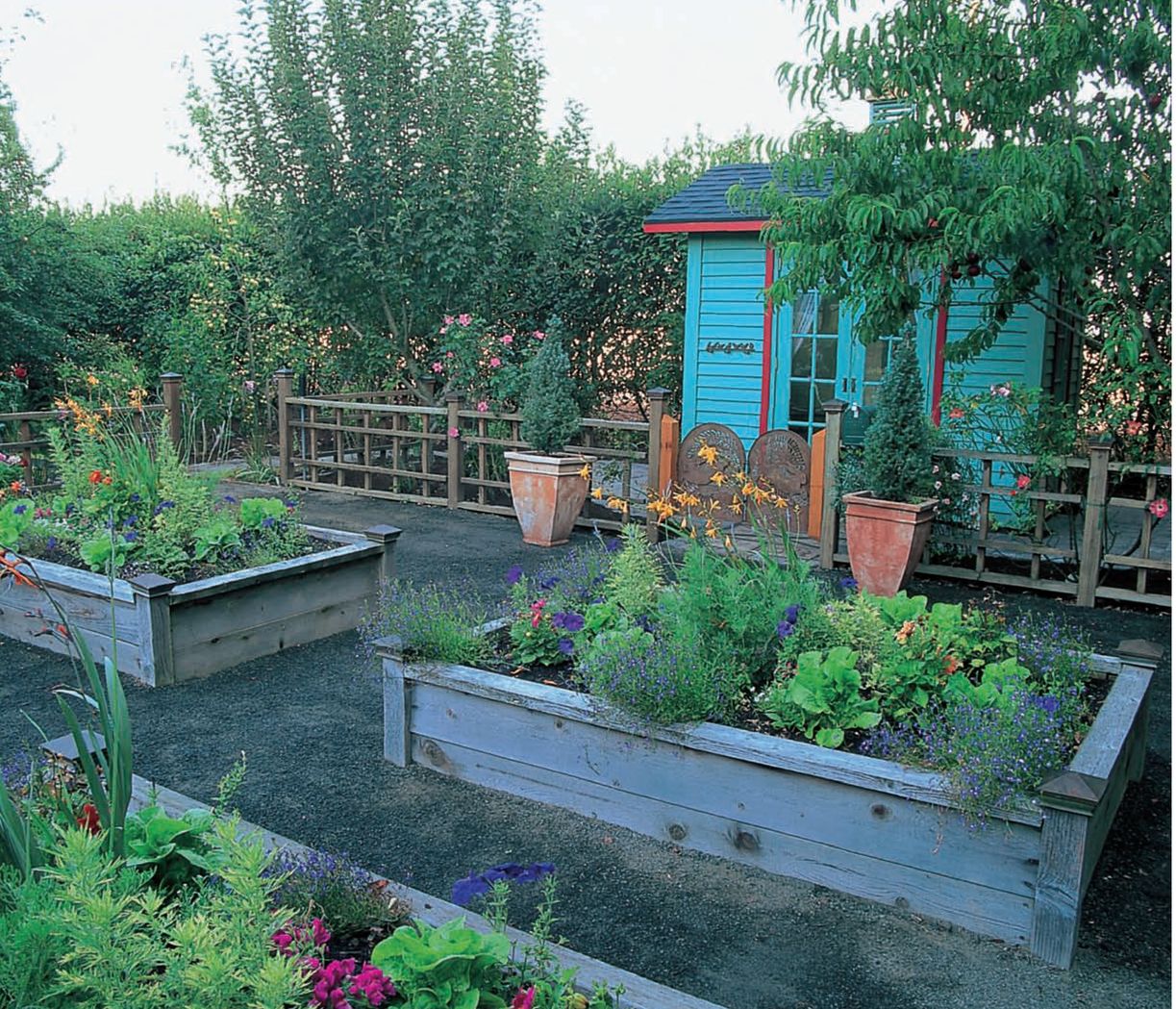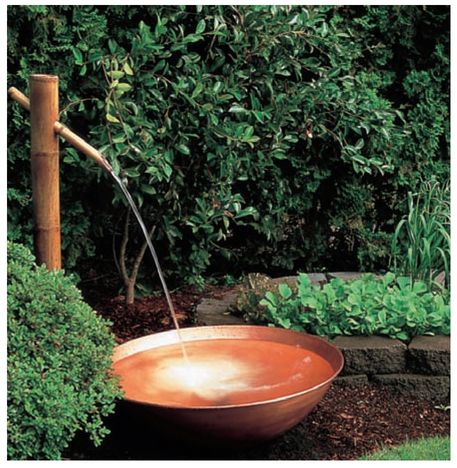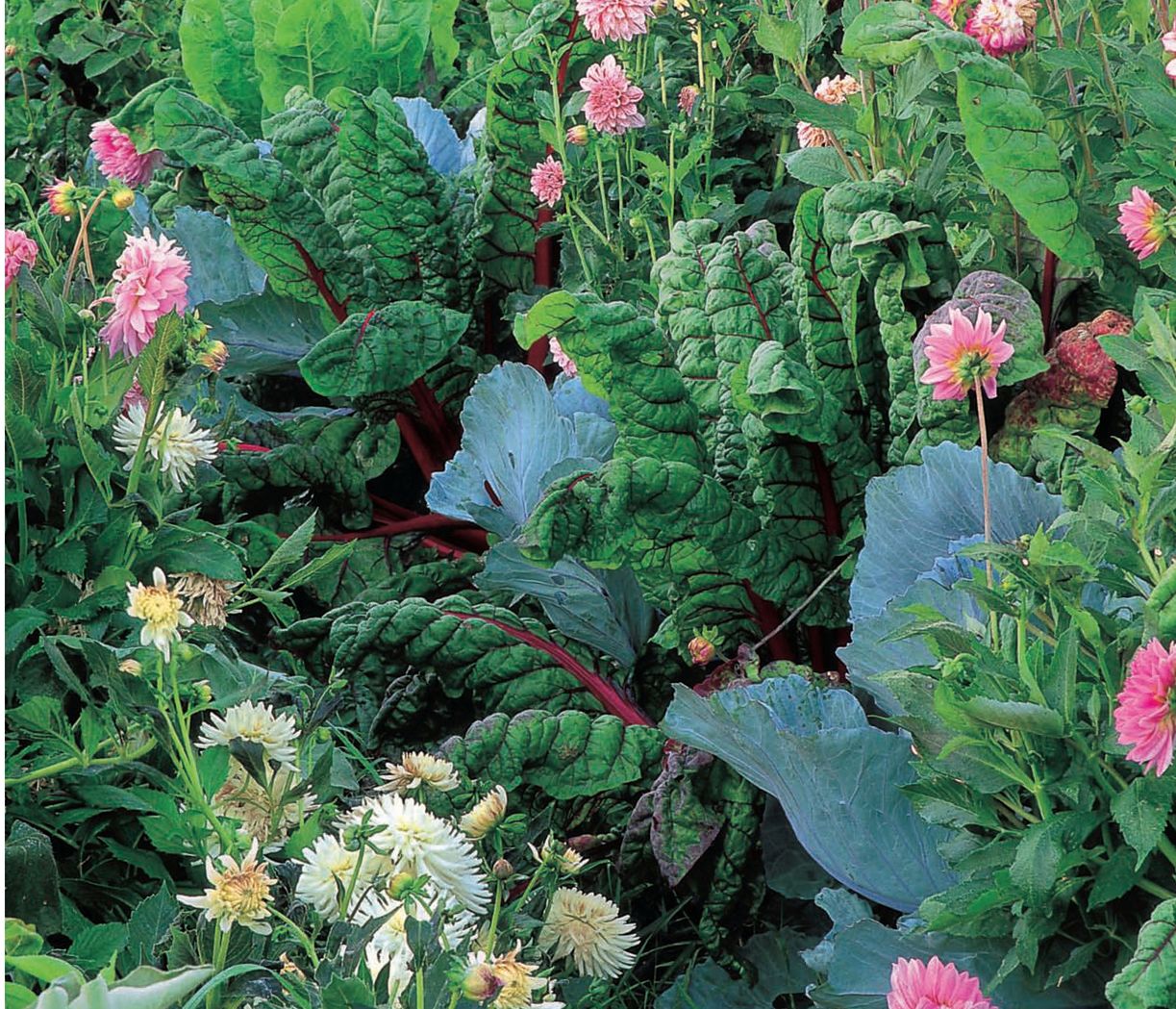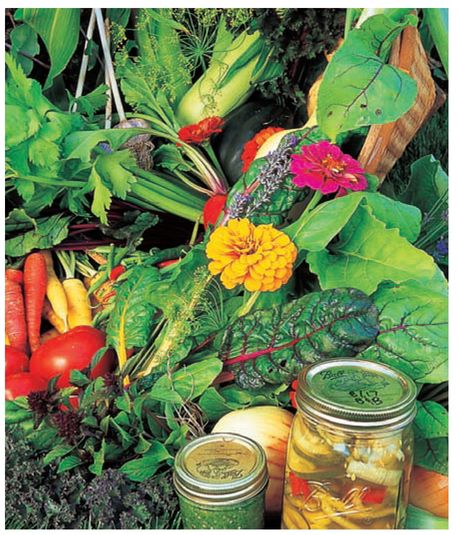Table of Contents
To Peter and Andrew, Matt, Simon, and Gabriel for being so much fun to feed
To Signora Savino for teaching me to savor
To mom for teaching me to clean up as I cook!
Fruits and vegetables you grow yourself using organic gardening techniques not only taste better, theyre better for you.
why organic?
For nearly 20 years, I have lived and gardened on a semi-rural island a short ferry ride away from Seattle. Huckleberries and fresh salmonberries fringe the edge of my backyard, and each spring, I gather native fiddlehead fronds to stir-fry with hops shoots and infant asparagus. Though I now have the luxury of sun and space to grow whatever I like, I understand that your garden may not be big enough for rows of corn and hills of beans. In my time I, too, have lived in a third floor walk-up, growing herbs and tomatoes on the fire escape and runner beans in window boxes.
For some years now, Ive been writing recipes for the Seattle Post-Intelligencer. These food columns feature fresh, locally grown produce that could come from your own backyard or from your favorite farmers market or grocery store. Each week, I encourage readers to grow, buy, and cook with organically grown or raised foods as much as possible.
Why? Partly because organically grown food contributes to the well-being of the planet, and partly because it contributes to the well-being of humanity. In addition, I love really good food, and there is no better food available, both in nutritive quality and in full, rich flavor, than organically raised edibles. I offer this combination cookbook and garden book in the hope of enticing you to try cooking with and possibly growing at least a few of these delicious, wholesome, nutritious foods for yourself.
To encourage you to experiment, Ive organized the recipes seasonally, adding tips on using a wide range of vegetables, greens, fruits, and herbs at their peak of freshness. Each section of the book opens with an essay that offers an overview of typical garden activities for that season, including timing and techniques for growing and harvesting many foods that grow well here in the maritime Northwest. Youll learn easy, effective organic gardening techniques like mulching with compost, which feeds the soil and lets the soil feed the plants.
At the end of each section, youll find a Gardening Calendar for the season, listing what to plant, what to harvest, and whats to be found in local markets. Each calendar is followed by Gardening Notes for the vegetables, fruits, and herbs that are ready for harvesting in that season
Copper bowl and fountain amid lush garlic and salad greens.
so that you can use them in the featured recipes. The Gardening Notes tell you in detail when and how to plant each ingredient, how to cultivate it, and which varieties do especially well in our region.
While these recipes may include ingredients you cant find in your own backyard, there are local resources for any and all of them, from farmers markets to our outstanding regional grocery stores, which stock fresh, organic fruits, vegetables, and herbs as a matter of course. Just to keep things simple, I suggest substitutions for anything that might prove challenging.
Weighing the costs
Once the exclusive province of health food diehards, organically grown food has become increasingly popular over the past decade. Some studies indicate that people with food sensitivities may be reacting to pesticide residues as well as to a specific food allergen. When it comes to putting food in their childrens or grandchildrens mouths, many people are rethinking old habits. Sprays that kill bugs and weeds on contact have been well demonstrated to harm humans, too. When excess herbicide and pesticide gets into water systems, whether as runoff from agriculture or just from weed-and-feed residues being washed into the nearest gutter, the toxins also affect frogs and fish, birds and bees, and all kinds of aquatic and wild life.
Human drinking water is similarly affected. Studies done early in this brand-new century reveal that the water supply of every major city in North America carries measurable and often dangerous levels of agricultural and manufacturing chemicals. In Washington State, every important body of water, including lakes, ponds, rivers, and streams, as well as municipal water supplies, shows contamination with more than 20 common pesticides. Even after treatment, many water supplies show measurable amounts of steroids and antibiotics in addition to as pesticide residues. Human drugs of choice show up also, including caffeine and Prozac.
A colorful mix of cabbage, chard, and dahlias.
Not a day goes by without a new environmental horror story appearing in the news. As a result, organic food sales are soaring. For many folks, the only real stopper is price. It costs more to farm organically on a small scale, because it takes more time and effort than it does to run a chemically dependent agribusiness. On the other hand, when we take into account the true cost of growing food with toxins, the price of organic food looks a lot better. Add in the cost of cleaning up the soil and air and water, of recovering lost topsoil, of restoring lost or damaged habitat, and of protecting newly endangered species like salmon that cant tolerate agricultural toxins, and conventional farming starts to look pretty expensive.
One great way to get around the price problem is for each of us to buy as much organic produce as possible. The more we support organic farming, the better the price of organic food becomes. By supporting local farmers, as well as national companies that offer organic foods, we help them all to be more efficient and cost-effective.
Another great way to eat well at a reasonable cost is to grow at least some of your own food. Even the smallest garden has room for a barrel of herbs and salad greens. Intensive organic methods allow gardeners to feed a family of four year round from a quarter-acre of ground. Few of us have that much room, or even the time it would take to grow and store that much food, but almost all of us can grow a few tomatoes and as many fresh herbs as we can use.
If you think of organic gardening as difficult or mysterious, I have good news for you. Over the past thirty years or so (since Ive been gardening organically), a lot has changed. New technology has given us effective and safe products with which we can solve almost every common garden problem without toxins. New tools and techniques make garden preparation, plant care, and harvesting simpler. Should we choose to put food by as well as eat it fresh, advances in food storage techniques also simplify the processing stage.


